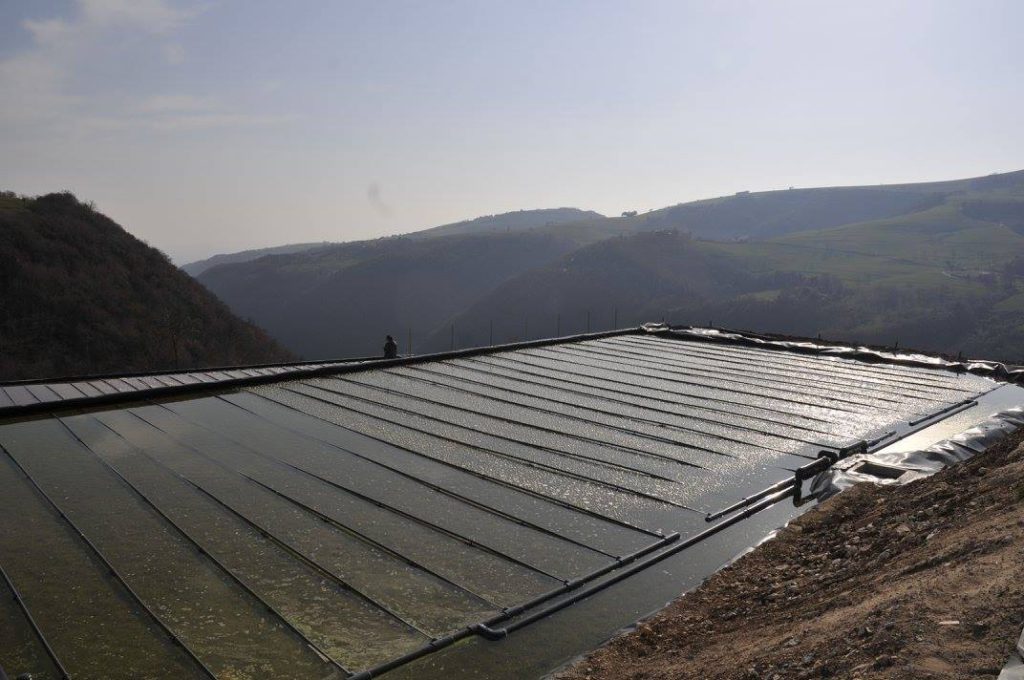Pig farm drains, a potential source of viruses, can be treated with constructed wetlands

Сonstructed wetlands (CW) are currently very popular, they are extremely effective “green” sewage treatment plants, which are well-drained landscapes occupied by unpretentious moisture-loving artificial vegetation. Currently, this type of treatment plant has already established itself in various industries: first of all, of course, we are talking about the treatment of domestic and agricultural wastewater. However, the potential of such facilities is great, and the accumulation of experience in this direction will allow the use of CW in other industries, which are characterized by the presence of polluted effluents.
This cleaning technology has become especially significant now that the world is facing a pandemic caused by a virus that has passed to humans from animals. Therefore, it is extremely important to respond promptly to the changing epidemiological situation and to rely on those environmentally friendly technologies that will minimize the possibility of such scenarios of the spread of viruses in the future.
Agricultural runoff is often characterized by a higher content of pollutants than diluted household waste. This is especially true for stocks of livestock products, such as pig farms.
In this case, the main threat is associated with the pollution of groundwater with nitrates. But the most dangerous component of effluents is bacteria and viruses. In this article, we look at IRIDRA’s experience in building a CW for processing pig farms.
The first, relatively small project, was implemented in 2015 at a pig-breeding farm in Magnacavallo (Italy) with a livestock of 1,500 sows. The water purification system here is combined and consists of two main parts: anaerobic digestion of sediment upstream (UASB) and horizontal wetland wetland (HFCW). In a nutshell, UASB is a container into which liquid wastes are loaded with a high content of organic substances, which decompose bacteria living in an oxygen-free environment. At the same time, biogas is formed, which is naturally removed into the hole from above.

Constructed wetland on pig farm Magnacavallo (Italy)
HFCW, as the second stage of wastewater treatment, is carried out using aerated wetland technology (forced layer aeration – FBA™) – this is an innovative technology consisting of one or more constructed wetland layers (horizontal – like in this case or vertical in other case) that are fully saturated and equipped with aeration system (blower). The presence of air injected through thicker CW allows to intensify the processes of oxidation of polluting organic substances to their almost complete removal. The project successfully operates and demonstrates the successful removal of up to 99% of nitrogen-containing pollutants.
The second, larger project was carried out in 2016 on a pig farm with 3,000 pigs in Roveré Veronese (Italy). Here, the design also involved two technological stages of cleaning: the FBA™ – mentioned in the previous project and the lagoon. A lagoon in the context of CW is a pond of natural or artificial origin, into which almost completely purified water enters, which is naturally purified: mainly by microorganisms that live in water, and by oxidation in water. We emphasize that it is extremely important to ensure almost complete purification of water before entering the lagoon, if possible mixing and aeration along the route to the lagoon – otherwise, pollution and eutrophication of the reservoir is possible.

Scheme of constructed wetland on pig farm Roveré Veronese (Italy)
The construction of this CW more complex object took place in many stages: we draw your attention to the fact that the source of pollution, the pig farm is located in a rugged terrain. In this case, the elevation on the ground was used during the construction of the CW – water to a large extent moves from one CW unit to another and further to the lagoon by gravity.




Some stages of CW construction in Roveré Veronese (Italy)
The amount of water that can clean such CW is very impressive – up to 38 cubic meters of effluent per day. It should be noted that CW in Roveré Veronese is the First aerated treatment wetland for swine wastewater in Italy and among the first worldwide of a similar scale and quality of water treatment. Also, the FBA™ method used here is characterized by extremely low energy consumption, which saves up to 80% of energy compared to classical bioreactors. Moreover, as can be seen in the photographs above, the final stages of the development of vegetation, which performs the function of biological treatment of polluted waters in CW, are characterized by excellent integration into the terrain – the object not only works as “green” but also looks “green”.
The experience gained in Italy is extremely important for the development and dissemination of environmentally friendly and efficient technologies, since the resources of natural waters are very, very limited, we have been faced with in recent years.
Full Text:
- Kadlec, R. H. & Wallace, S. D. (2009). Treatment Wetlands, 2nd edition. CRC Press, FL, ISBN: 978-1-56670-526-4.
- Liu, R., Zhao, Y., Doherty, L., Hu, Y., & Hao, X. (2015). A review of incorporation of constructed wetland with other treatment processes. Chemical Engineering Journal, 279, 220-230.
- Masi, F., Rizzo, A., Martinuzzi, N., Wallace, S.D., Van Oirschot, D., Salazzari, P., Meers, E. and Bresciani, R., 2017. Up-flow anaerobic sludge blanket and aerated constructed wetlands for swine wastewater treatment: a pilot study. Water Science and Technology, 76, 1, 134-146, 2017.(IRIDRA’s authors are highlighted in bold)
- Wu, S., Kuschk, P., Brix, H., Vymazal, J., & Dong, R. (2014). Development of constructed wetlands in performance intensifications for wastewater treatment: a nitrogen and organic matter targeted review. Water research, 57, 40-55.
- Wu, S., Lei, M., Lu, Q., Guo, L., & Dong, R. (2015). Treatment of pig manure liquid digestate in horizontal flow constructed wetlands: Effect of aeration. Engineering in Life Sciences.
